By Sean Fagan
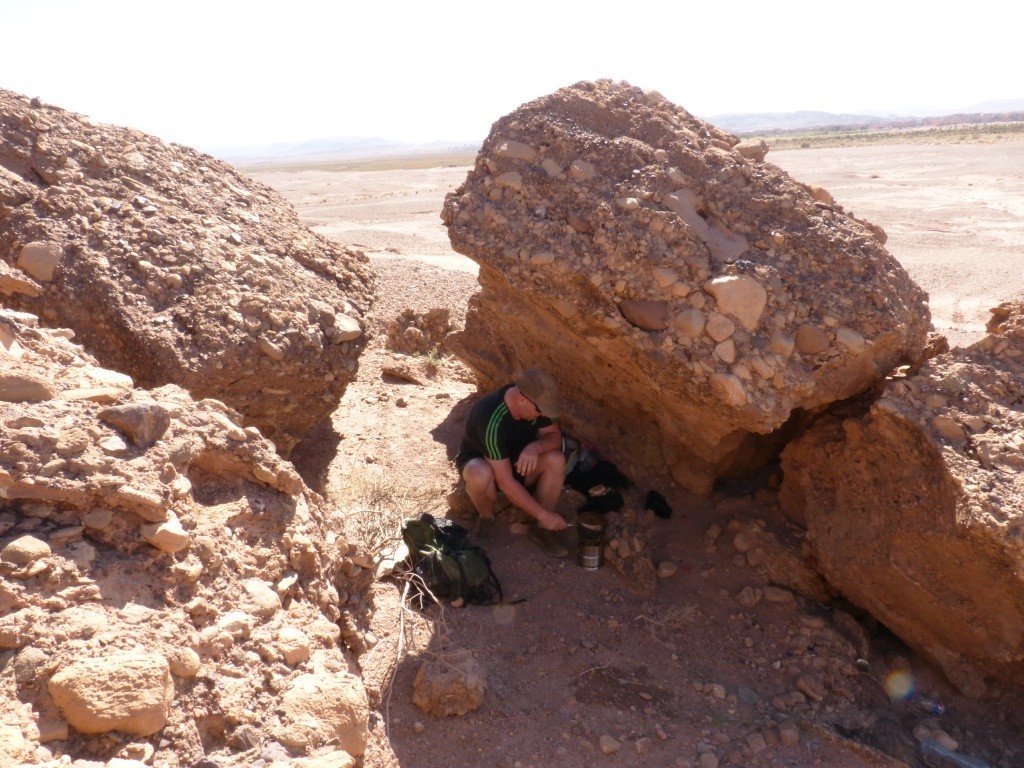
Cooking in the shade. It's hard to describe the unique atmosphere of a desert. What struck me most was a vast sense of emptiness. The writer Robyn Davidson summed it up well - "I love the desert and its incomparable sense of space" (Photo: Sean Fagan).
.
.
A Desert Adventure
.
One of my outdoor goals this year was to explore a desert. I've camped in arid areas of the Mediterranean before but I've never camped in a true desert.
So off I flew to Morrocco. Then hopped onto a bus for a five-hour trip over the magnificent Atlas Mountains.
I then made a very basic camp on the eastern side of the atlas mountains, near the desert town of Quarzazate.
Quarzazate is very much located in the Sahara desert even though it's perched a lofty 1,151 metres above sea level.
The desert in this part of the Sahara is not what one might envision. It's not the epic, tall dunes that is often portrayed in films and documentaries (only 15% of the Sahara is composed of dunes).
The most common habitat I came across were rocky plateaus (hamadas). I also came across some shrubby country, a few marshes and quite a few rocky hills and mountains - but most of the desert I experienced was rocky and flat.
.
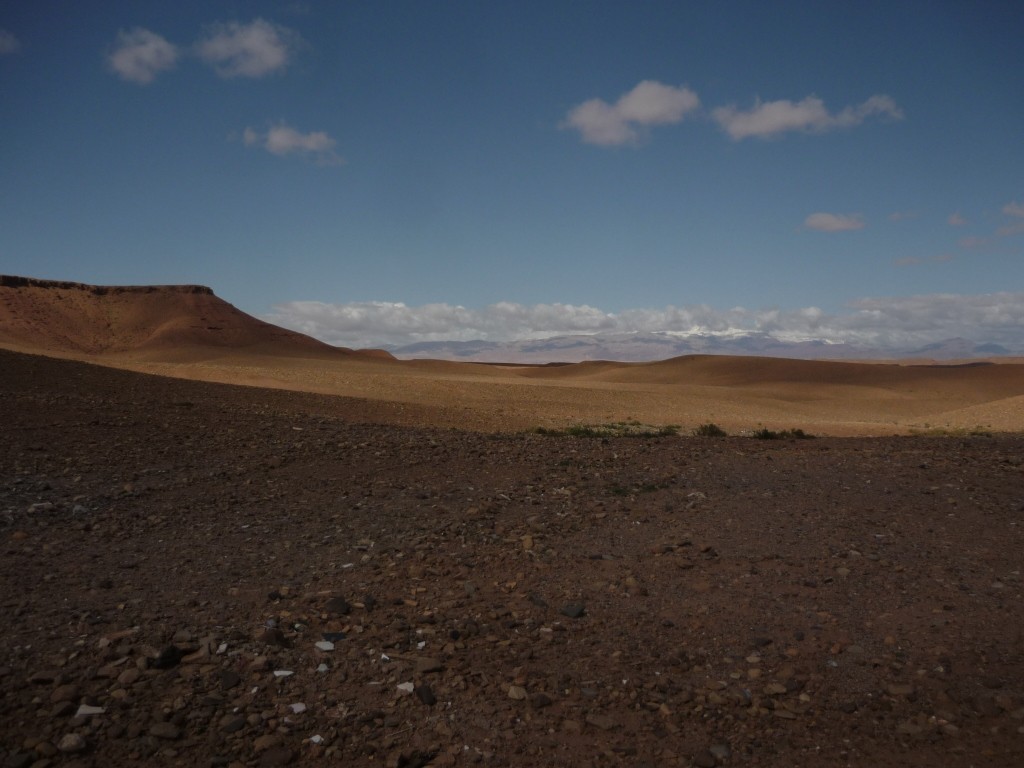
Much of the Sahara desert is composed of rocky hamadas (plateaus). They certainly have a harsh, austere beauty of their own. A word of caution, hiking across hamadas is hard on the feet so wearing sturdy footwear that is lined with well-cushioned insoles, will greatly alleviate and prevent sore feet (Photo: Sean Fagan)..
.
The Challenges of the Desert
.
Regardless of what the desert is like under your feet, it's an incredibly dry place.
Rainfall is scant and when it comes, it's often in the form of winter thunderstorms - whereby mostly dry riverbeds become engorged with water - often causing flash-floods.
In short, the desert is a place of contrast and is a challenging environment to hike and camp in. This is mostly due to three reasons: 1) lack of water 2) hot, sunny weather during the day and 3) cold temperatures at night
*Not all parts of the far-reaching Sahara desert experience cold nights - after all, the Sahara is about the same size of China - and has a variety of desert climates.
.
In a future blog, I will be sharing how I coped with the challenges of the desert.
I will also be sharing with you some of the more unusual experiences I had in the desert (such as two rival packs of semi-feral dogs fighting near my camp while I was in my sleeping bag).
For now, I'll leave you with some photos of the desert....
.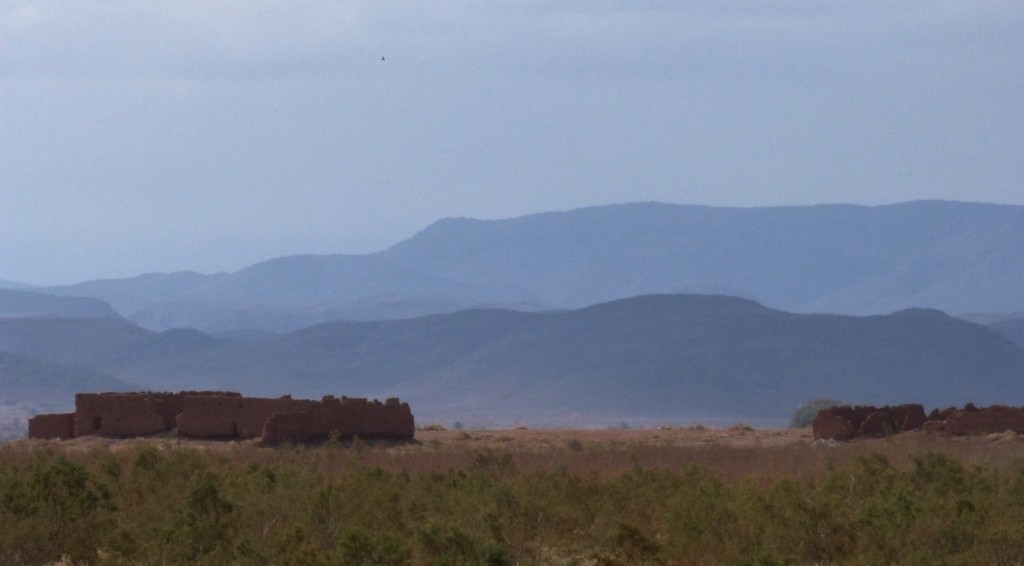
The remains of the these old Berber buildings is made from a mix of clay-rich mud, some gravel and straw. The walls were immensely strong and effective. The Berber people are a vast ethnic group indigenous to north Africa - which have occupied north Africa for about 5000 years (Photo: Sean Fagan).
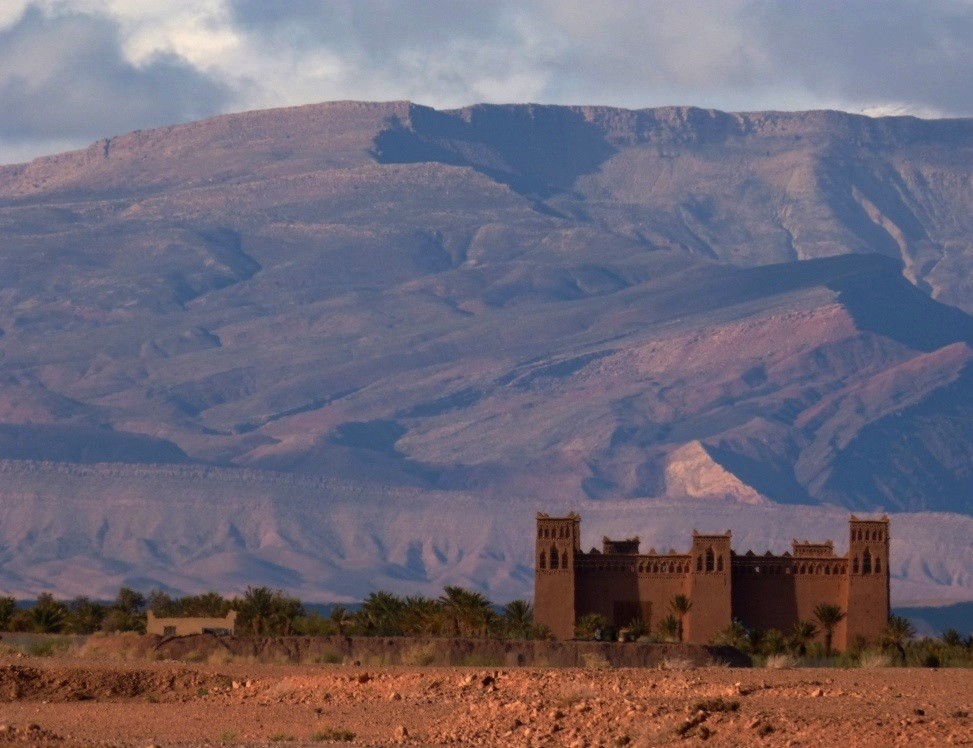
A Berber fort (Kasbah). The Atlas mountains are in the background (they are just foothills of the Atlas mountains!), (Photo: Sean Fagan).
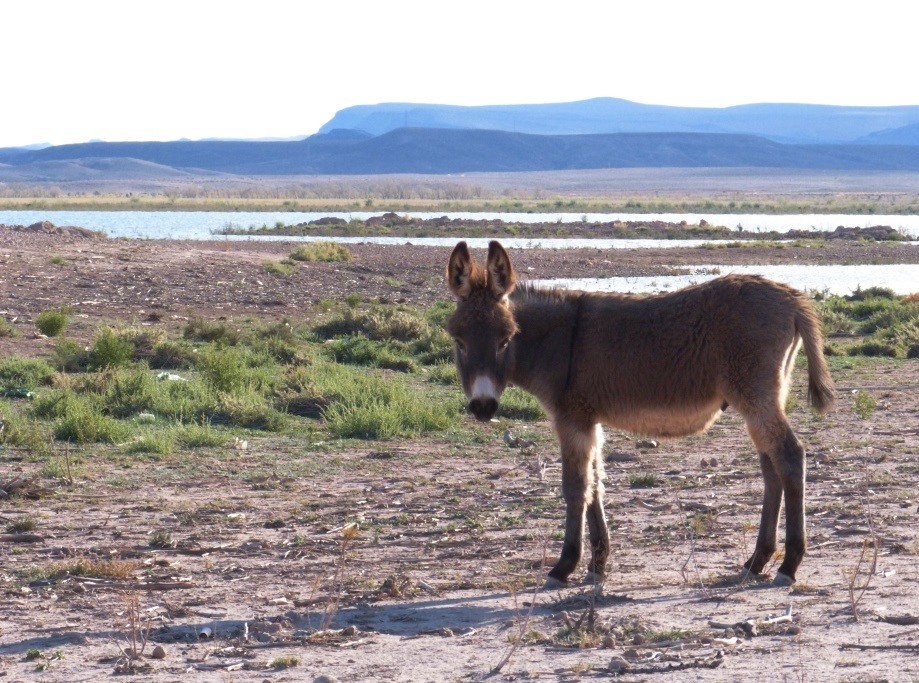
It takes a certain type of toughness to survive in the desert. This breed of donkey does well in the dry conditions of the desert partly because they can readily feed upon the tough, often thorny, desert vegetation (Photo: Sean Fagan)....
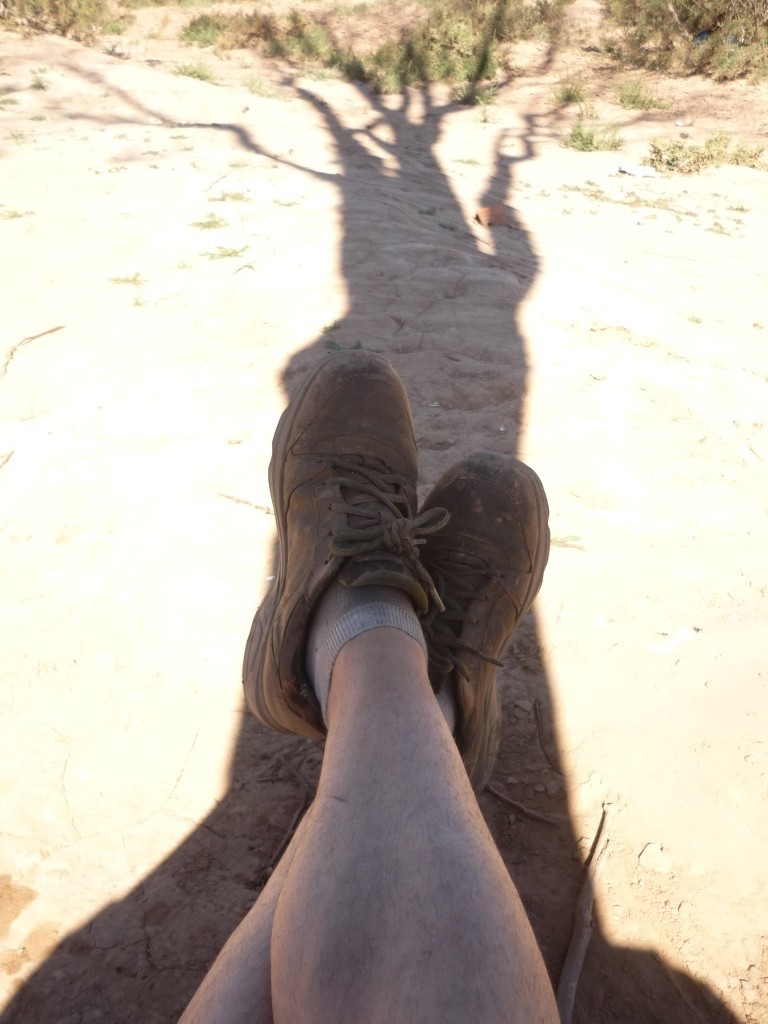
In the desert, all shade is welcome - even the scant shade cast from a dead tree (Photo: Sean Fagan).
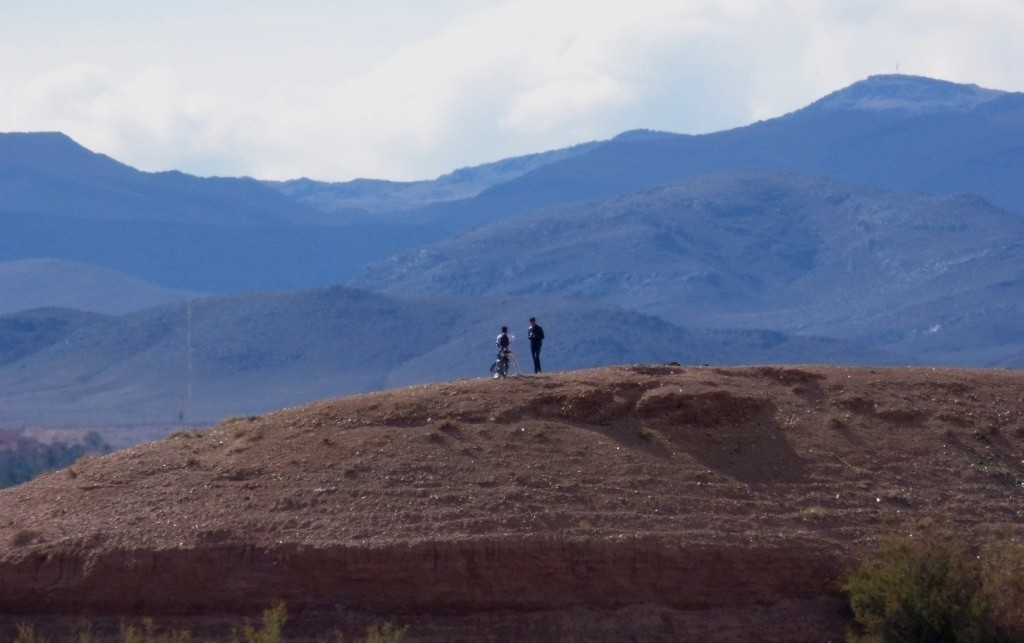
Two people enjoying the desert, near the town of Quarzazate (Photo: Sean Fagan).
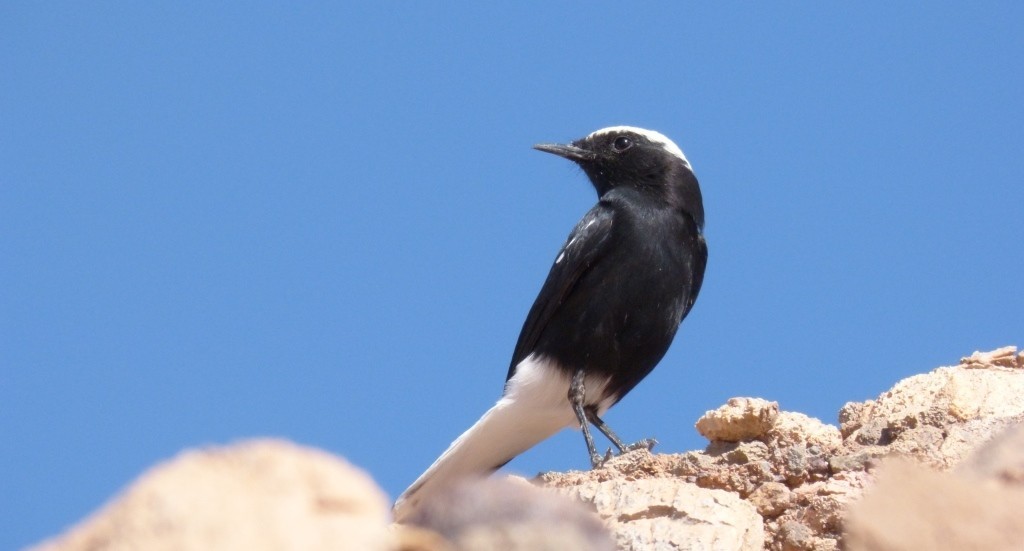
A true rocky desert specialist - the White-Crowned Black Wheatear (Oenanthe leucopyga). This gregarious bird species often approached near whenever I took a break in the desert. A lovely companion to have in the remoteness of the desert (Photo: Sean Fagan)..
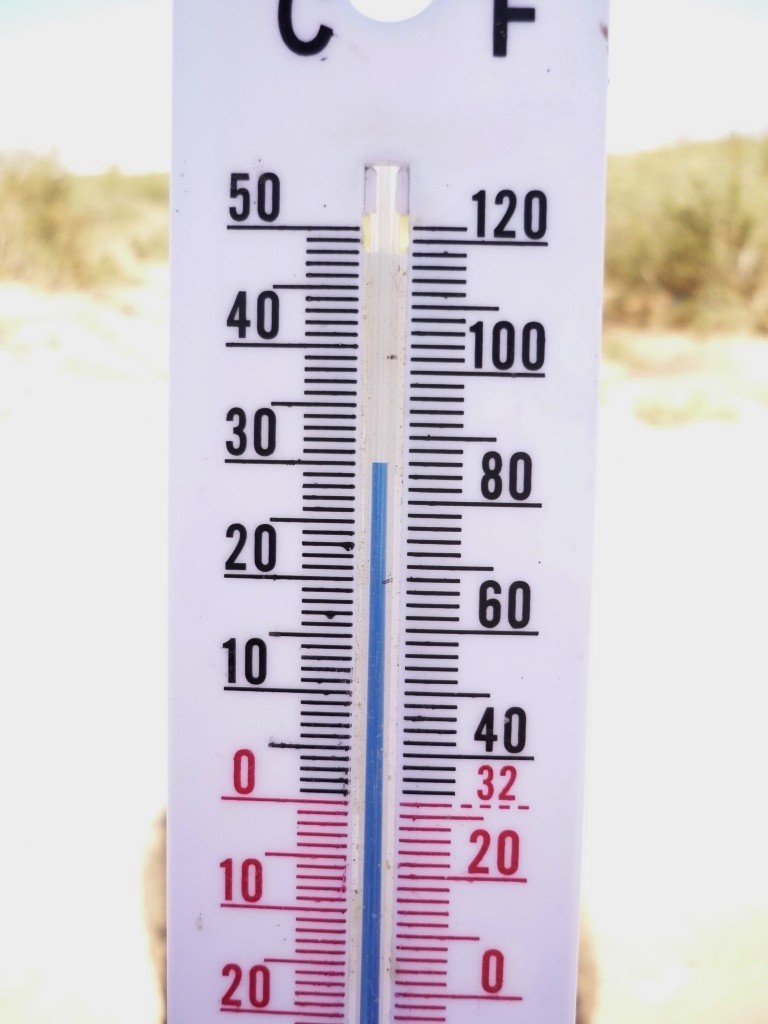
Daytime temperatures during my winter visit of the Sahara would often peak at around 30 degrees centigrade. In summer, temperatures often peak around 45 degrees centigrade. It really is a land that revolves around the sun (Photo: Sean Fagan).
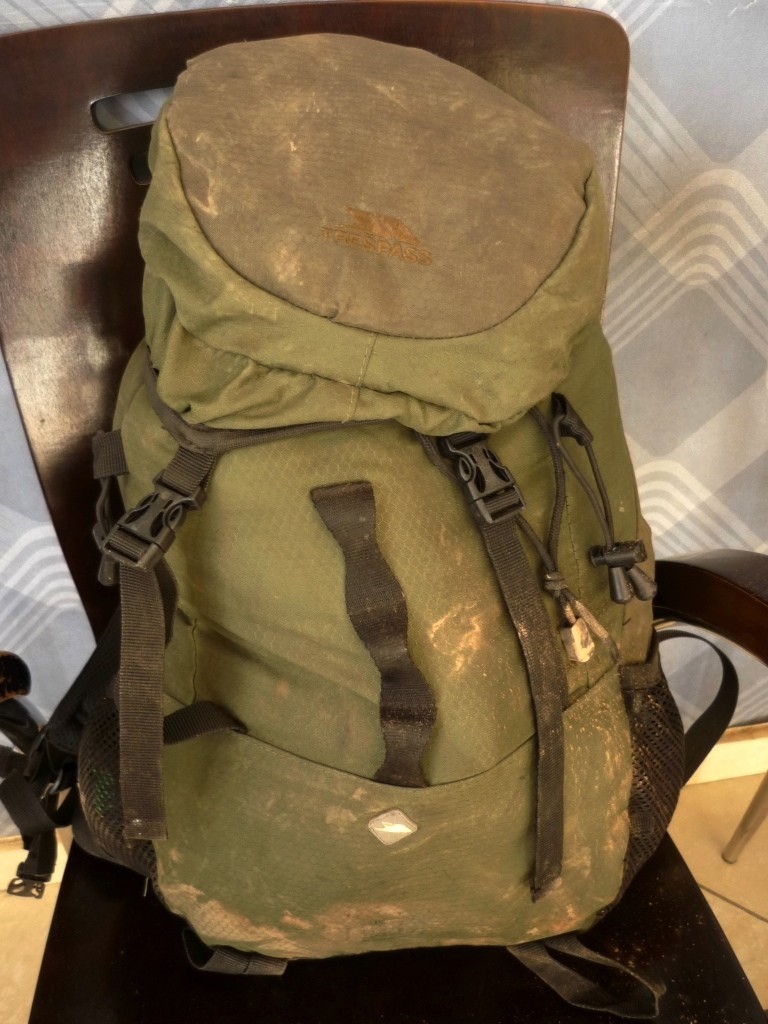
My daytime hiking bag was looking a bit worse for wear after a few days in the desert. The dust, mud, sand and thorny vegetation took its toll (Photo: Sean Fagan).
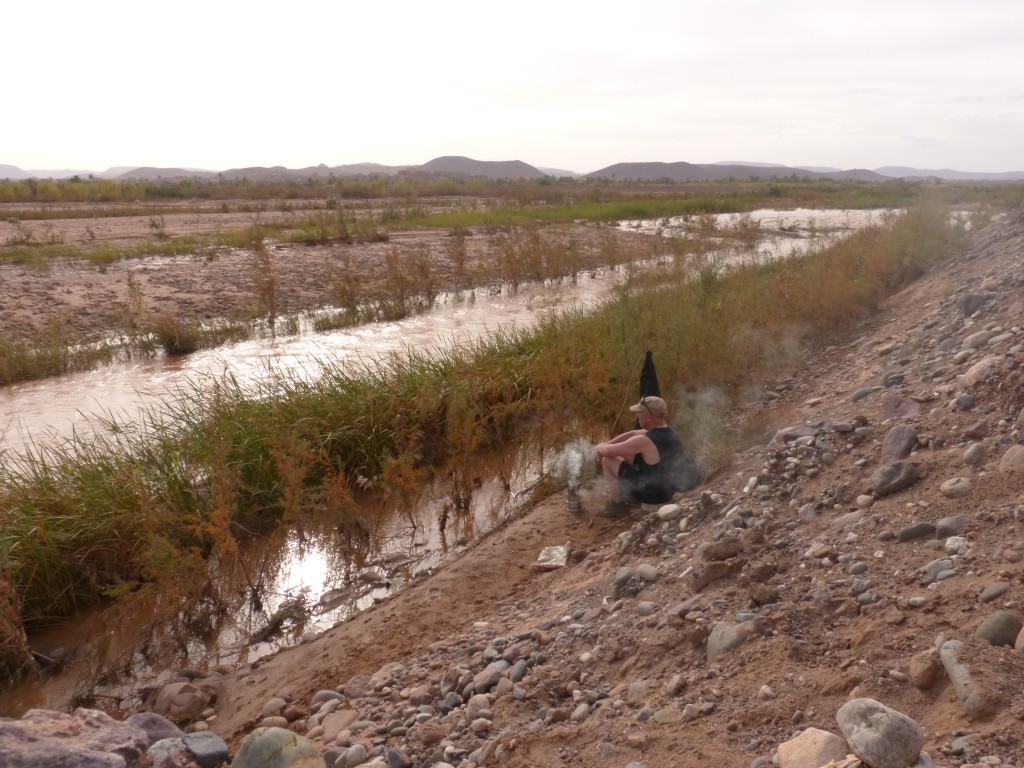
Cooking along one of the few rivers I came across in the desert. I even found some otter tracks nearby. That bank behind me is about 3 metres high and was formed during floods after heavy rain (Photo: Sean Fagan).
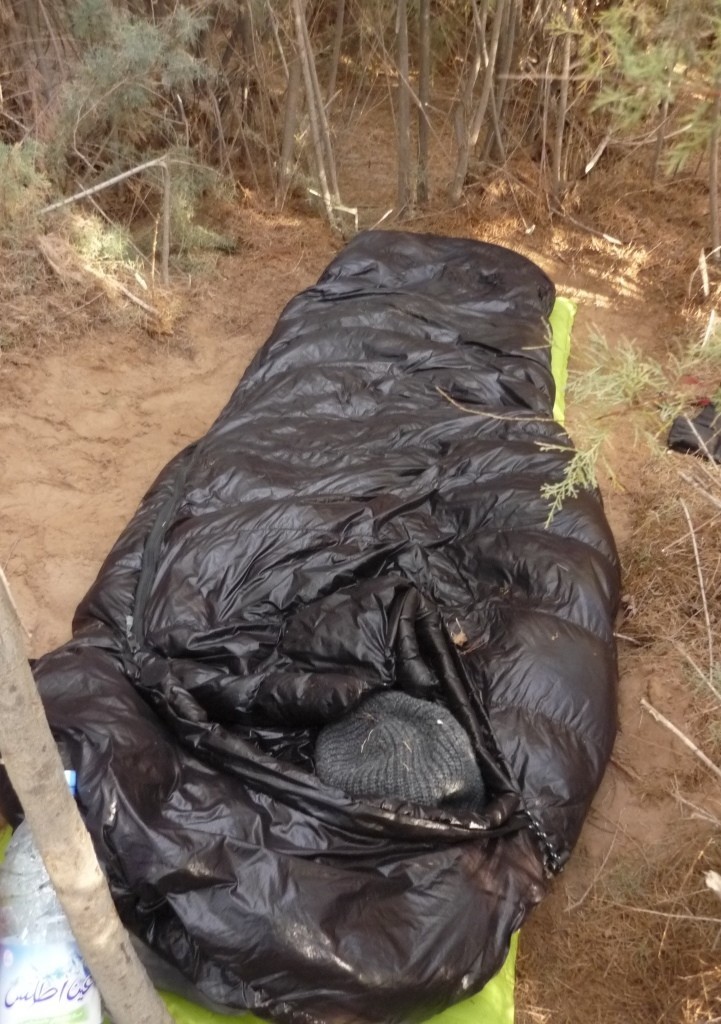
My desert bed. A very simple camp, discreetly hidden within a thick stand of shrubs. My down-filled sleeping bag kept the night chill out. Note wool hat in bag. I also had a tarp, just in case. During the day, I hung my sleeping bag to keep it fresh and dry and to also keep out any nasty creepy crawlies. If I can get away with it, I like to sleep out in the open as the connection to nature is more profound and relaxing (Photo: Sean Fagan).
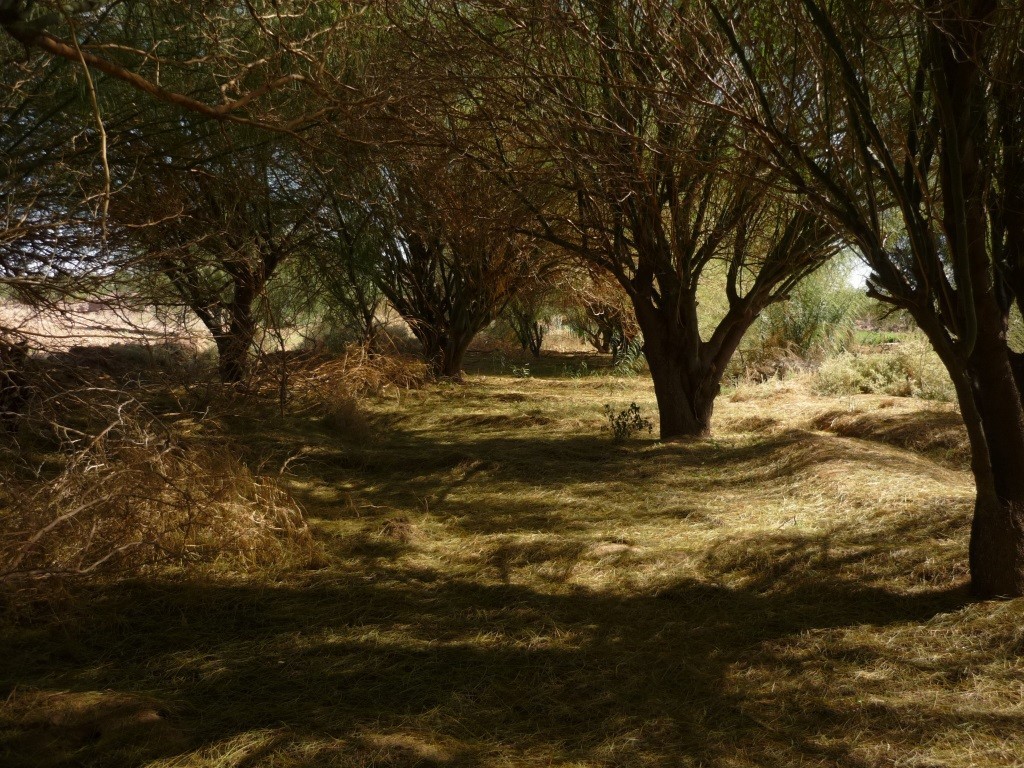
Occasionally I came across trees, usually near water. This stand of acacia trees provided a blissful reprieve from the burning sun. It was a natural spot for camping or taking a break from hiking to cook up some food and quench a thirst (Photo: Sean Fagan).
.
.
Overall, my first desert experience was challenging but deeply satisfying. I couldn't get enough of this stark, enigmatic, uncompromising landscape.
Without a shadow of a doubt I'll be back again, and soon.
I urge you to go too.
.
.
"In the empire of desert, water is the king and shadow is the queen" ~ Mehmet Murat ildan
.
.
"What draws us into the desert is the search for something intimate in the remote" ~ Edward Abbey
.
.
.
Related articles on this website:.
*Check us out on Instagram, Twitter & Facebook for more outdoor-related topics..
Links:- The Berber People
- Edward Abbey (environmentalist and desert enthusiast)
- The Sahara Desert
- The White-Crowned Black Wheatear

Recent Comments